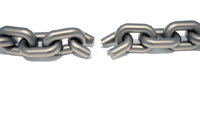Did you know that adding a favicon (short for “favorite icon”) can give your site a boost in more than one way? A favicon is a small image associated with a website, and you can usually see it in one of the places:
– in the address bar
– in your bookmarks
– in your history
– in your tabs, if you use a tabbed browser
So, how can a favicon help you? First of, all, it brands your website and implicitly, you. How? Every time someone looks in their favorites/bookmarks, instead of seeing the standard web page image, they’ll see your specific image, because it will be different and it will stand out.
Here are some other favicon benefits:
– if you work with lots of tabs at one time, it will help you identify which tabs have your specific site
– your site will be easier to find in the sea of bookmarks we all have these days, and you will get repeat traffic
– it will decrease the number of 404 errors in your logs, since browsers look for the favicon
How to Create a Favicon
Creating a favicon is not hard if you have the image you want to use. You want this image to be as simple as possible, without fine lines or text, as it needs to look good in a small size, since the favicon size is 16 pixels by 16 pixels. You also need to match your favicon to your site’s logo and color scheme as much as possible.
Once you have your image, you need to convert it to the .ico type file, and this can be easily done with any of the free favicon generators found online.
Your next step is to upload your favicon.ico to your root directory. That wasn’t so hard, was it?
If you don’t have a favicon for your site, I suggest you go get one now: it’s easy enough and you’ll reap the benefits almost immediately.



